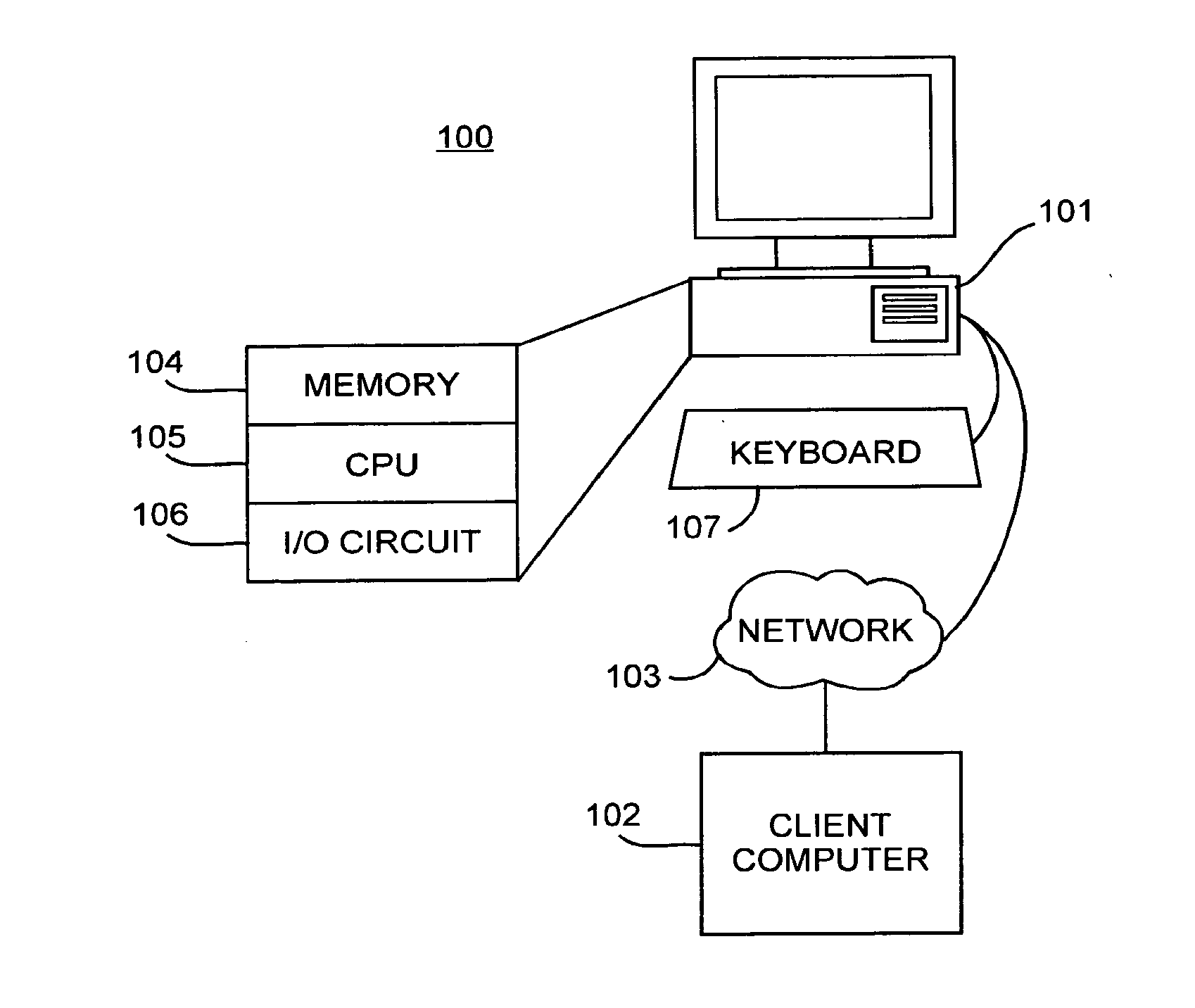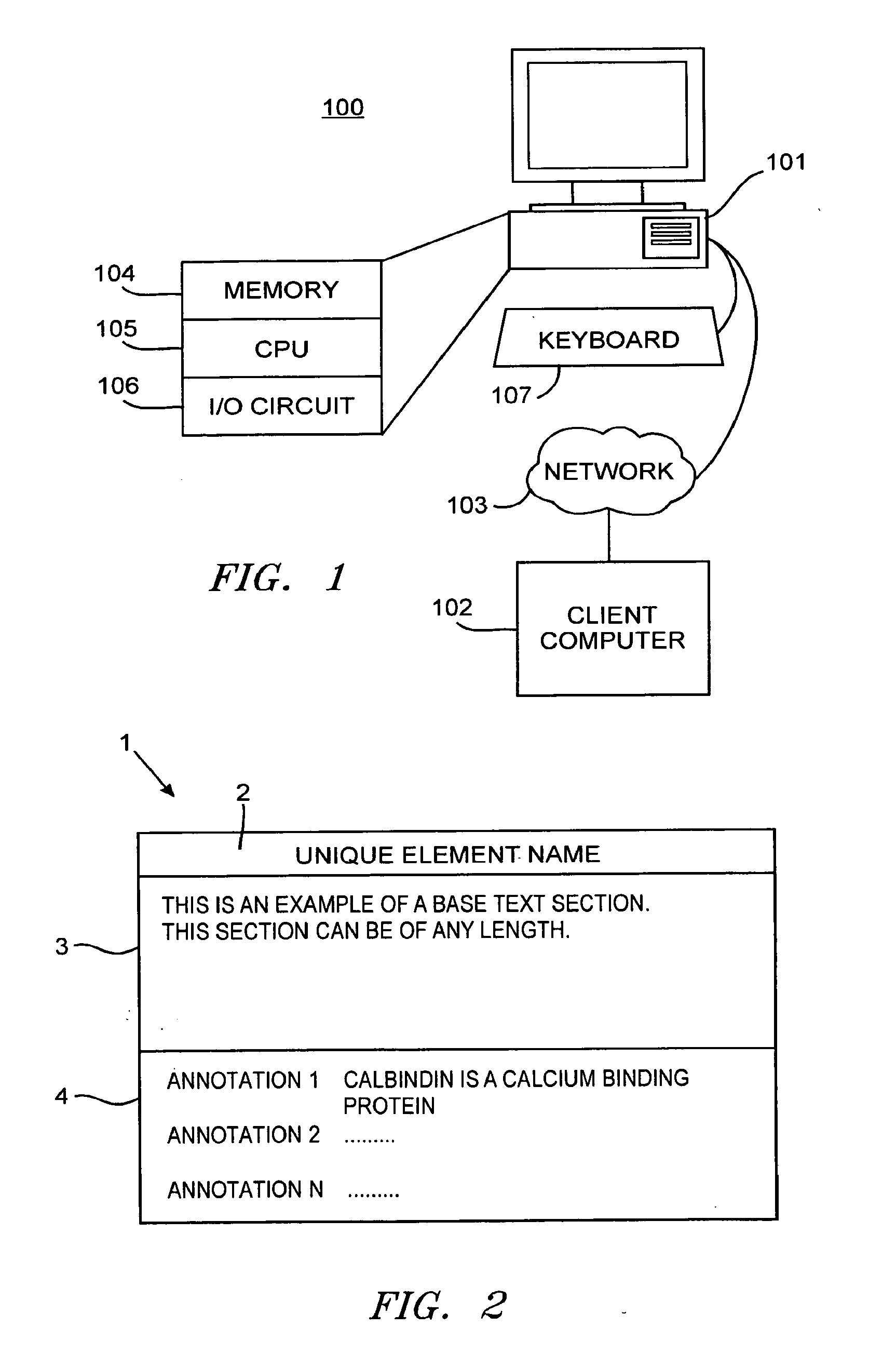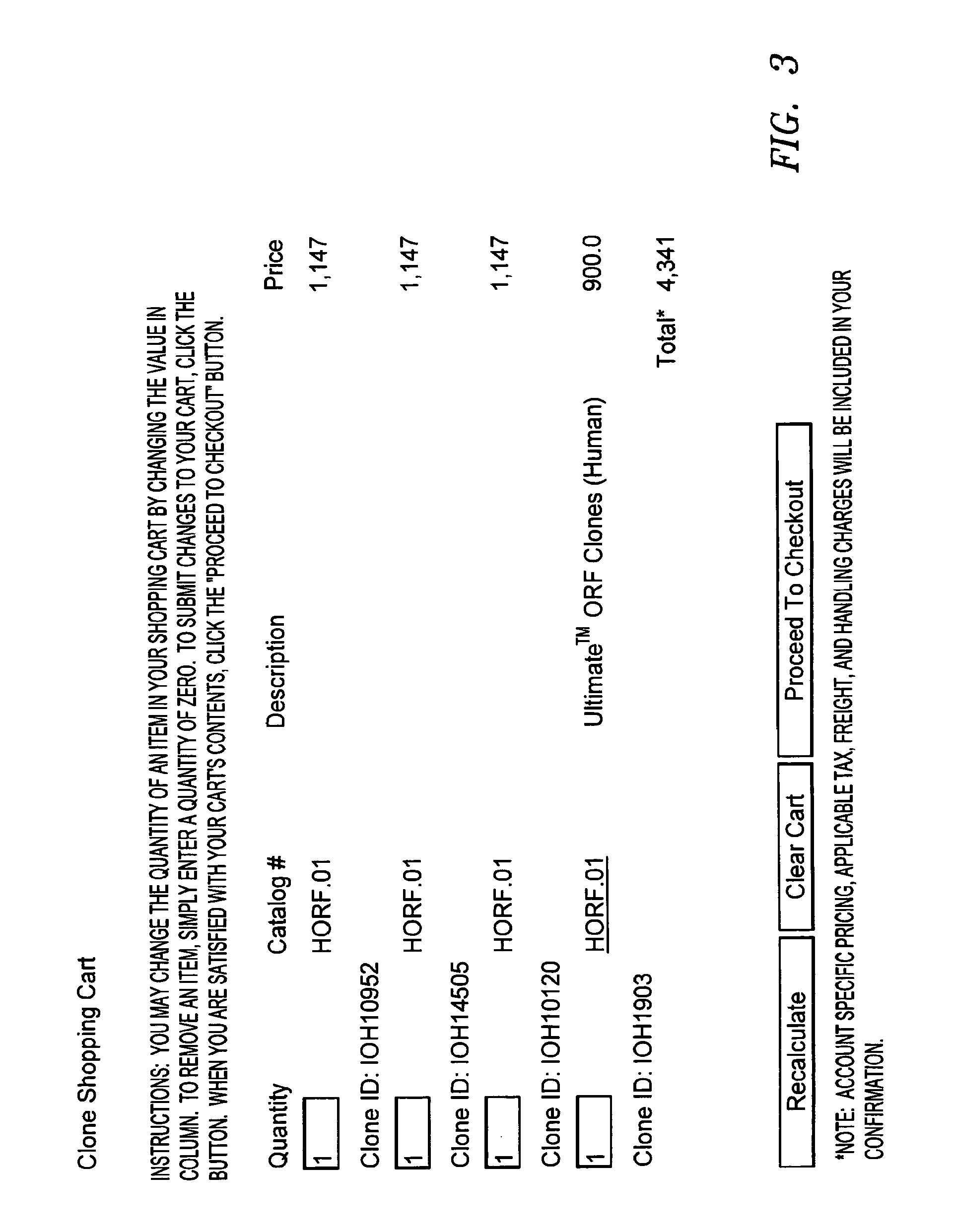Collections of Matched Biological Reagents and Methods for Identifying Matched Reagents
a biological and reagent collection technology, applied in the field of biological reagent collection, can solve the problems of not being able to interact with the system, scientists and physicians are more difficult to be aware and knowledgeable of all the research tools and biological and medical information available, and custom systems are extremely expensive to be developed at buyers' or vendors' sites
- Summary
- Abstract
- Description
- Claims
- Application Information
AI Technical Summary
Benefits of technology
Problems solved by technology
Method used
Image
Examples
example 1
Collections of Biological Reagents Comprising siRNA Reagents
[0222]Collections of biological reagents may comprise, for example, siRNA reagents. Those of ordinary skill in the art will recognize that the present example relating to siRNA reagents may be used to exemplify collections of biological reagents that comprise, for example, other nucleic acids, proteins, and antibodies. Collections of biological reagents may comprise, for example, siRNA and siRNA reagents presented herein in FIG. 17, or any of the siRNA reagents disclosed at and linked to http address rnaidesigner.invitrogen.com / sirna / searchValidatedStealth.jsp on the date this patent application is filed, which collection is hereby incorporated by reference in its entirety. A collection of biological reagents comprising siRNA reagents may be searched, for example, by inputting a search term into an input interface or input function. Such search terms may include, for example, any term that may be used to identify the siRNA,...
example 2
Collections of Biological Reagents Comprising Isolated Proteins
[0225]Collections of biological reagents may comprise, for example, isolated proteins. Those of ordinary skill in the art will recognize that the present example relating to isolated proteins may be used to exemplify collections of biological reagents that comprise, for example, other biological reagents, such as nucleic acids and antibodies. Collections of biological reagents may comprise, for example, isolated proteins from any organism, including, for example, bacteria, insects, plants, and animals. Isolated proteins include, for example, isolated native proteins, isolated recombinant native proteins, and isolated recombinant proteins with post-translational modifications. Such collections may comprise, for example, mammalian isolated proteins, or, for example, humans isolated proteins, such as those presented herein in Table 11, or any of the isolated proteins disclosed at and linked to http address invitrogen.com on...
example 3
Example of a Biomolecular Pathway Search
[0270]For purposes of illustration of a biomolecular pathway search, the calcium signaling pathway is used in the present example, the present invention is not limited to any particular pathway. Calcium (Ca2+) is a potent signaling molecule that is involved in many different cellular responses. Following receptor activation, members of the phosphatidylinositol-specific PLC (PI-PLC) family hydrolyze phosphatidylinositol 4,5 bisphosphate (PIP2) to generate inositol 1,4,5 triphosphate (IP3) and diacylglycerol (DAG). IP3 initiates the release of intracellular Ca2+ from the endoplasmic reticulum. Extracellular Ca2+ influx is subsequently triggered through the activation of Ca2+ release activated Ca2+ channels (CRAC) by a process called capacitative Ca2+ entry.
[0271]Calmodulin, an intracellular Ca2+ sensor, binds to Ca2+ and activates the serine-threonine phosphatase calcineurin. Calcineurin dephosphorylates serine residues on the N-terminus of NFAT...
PUM
 Login to View More
Login to View More Abstract
Description
Claims
Application Information
 Login to View More
Login to View More - R&D
- Intellectual Property
- Life Sciences
- Materials
- Tech Scout
- Unparalleled Data Quality
- Higher Quality Content
- 60% Fewer Hallucinations
Browse by: Latest US Patents, China's latest patents, Technical Efficacy Thesaurus, Application Domain, Technology Topic, Popular Technical Reports.
© 2025 PatSnap. All rights reserved.Legal|Privacy policy|Modern Slavery Act Transparency Statement|Sitemap|About US| Contact US: help@patsnap.com



